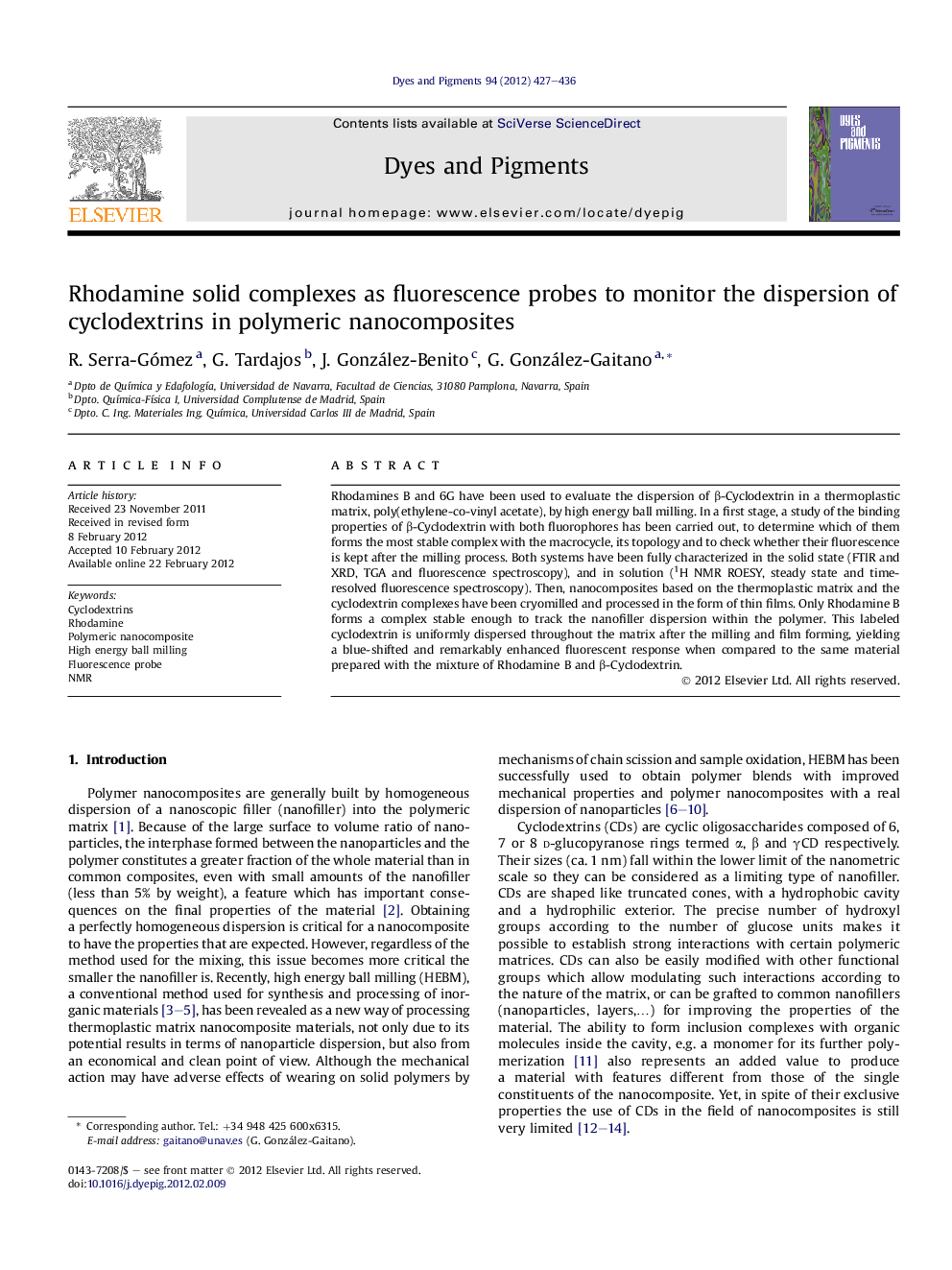| Article ID | Journal | Published Year | Pages | File Type |
|---|---|---|---|---|
| 176634 | Dyes and Pigments | 2012 | 10 Pages |
Rhodamines B and 6G have been used to evaluate the dispersion of β-Cyclodextrin in a thermoplastic matrix, poly(ethylene-co-vinyl acetate), by high energy ball milling. In a first stage, a study of the binding properties of β-Cyclodextrin with both fluorophores has been carried out, to determine which of them forms the most stable complex with the macrocycle, its topology and to check whether their fluorescence is kept after the milling process. Both systems have been fully characterized in the solid state (FTIR and XRD, TGA and fluorescence spectroscopy), and in solution (1H NMR ROESY, steady state and time-resolved fluorescence spectroscopy). Then, nanocomposites based on the thermoplastic matrix and the cyclodextrin complexes have been cryomilled and processed in the form of thin films. Only Rhodamine B forms a complex stable enough to track the nanofiller dispersion within the polymer. This labeled cyclodextrin is uniformly dispersed throughout the matrix after the milling and film forming, yielding a blue-shifted and remarkably enhanced fluorescent response when compared to the same material prepared with the mixture of Rhodamine B and β-Cyclodextrin.
► β-Cyclodextrin forms a fluorescent and stable solid complex with Rhodamine B. ► The fluorescence of the complex allows monitoring of the dispersion of the macrocycle. ► High energy ball milling disperses effectively the cyclodextrin in the polymer. ► No alterations of the macrocycle are produced either in the mixing or film processing.
